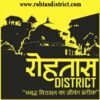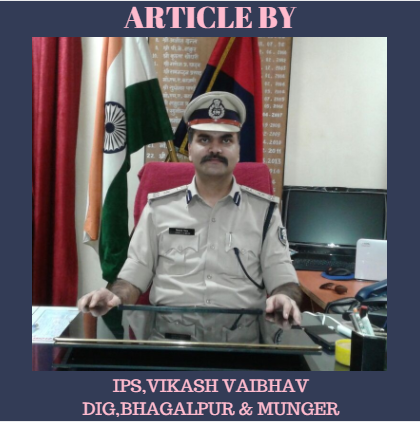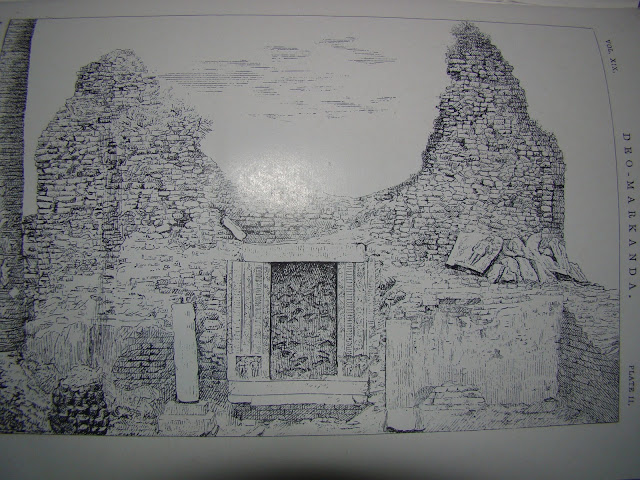
Structures at the Site :-
The Main Temple
Early Descriptions:- In Buchanan’s time the upper part of the main temple had fallen, the porch in its front also having lost its roof. Inside the shrine was a “pretty large” pedestal, supporting small images of Surya, Ganesh etc., though it was originally meant for some larger image which no longer existed in the shrine. Cunningham during his visit, found the figure of Surya 2’4” in height. He later explored the shrine floor and discovered a larger figure of Vishnu, 3’5” in height, which he thought was the original image enshrined in the temple. He mentions that if that would have been the case then the Surya image must have been from the adjacent temple which was completely in ruins, and hence may have been shifted.Garrick came across a local story that the small image of the Sun God was discovered by the villagers in the debris of the main temple and was later installed in the smaller temple. Both the temples were ornamented with carved bricks. On the dedicatory block of the little of the doorframe of the shrine was a representation which neither Cunningham nor Buchanan could identify. Garrick during excavation came across a highly sculptured gateway belonging to the ancient temple. Dr. Patil mentions the similarity of the site with the nearby site of Deo Barunarak and concludes that the temple may have been originally dedicated to the Sun god and was later converted to the worship of Vishnu.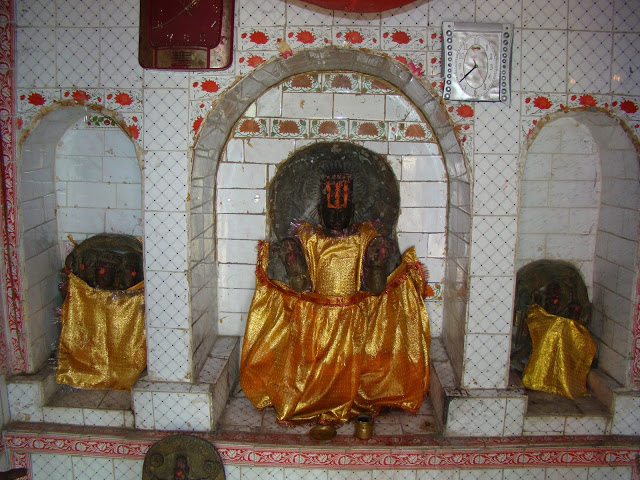
Present Status :- During visit in 2008, the small Shiva temple as noticed by the earlier visitors, was seen to be the largest temple on the site and perhaps the most well built. The earlier form of the temples has been dismantled and new constructions are in place. There are no means of visualizing the earlier form of the temples in absence of historical records. At present the earlier main temple was found to have been dismantled to form two rooms of the modern design, which house statues on the walls and on constructed platforms. The statues were found to have been plastered into the walls and covered with cloth as seen in the photographs below. The local priest informed about the theft of some statues from the site, about more than 20 years ago, after which the locals decided to plaster the statues into the walls for their protection. But it must be said that from the outside, the present structure does not at all look like a temple, and seems to have totally spoilt the antiquity of the place which could have been maintained had the earlier temple been restored to its original design. The elevated terrace as mentioned by Buchanan and others was still seen in remnants of bricks below the grass in front of the temple.
The Shiva Temple :-
Early descriptions :- About 100 yards north, or rather north-west, of the above group of temples, on the margin of the village mound, Buchanan had noticed “another small and more entire building of brick, which contains an immense linga, with a human face carved on one side of the phallus. Garrick also noticed a figure of Durga with a cup of blood in hand, and the slain Raktavija under foot. It is to be mentioned that this sculpture of Durga was not seen by Buchanan in 1812. This was found to be a popular temple especially among Mahajan classes in 1881 and was said to be built by Babu Baijnath Singh, a Paliwar Rajput about a century earlier. Cunningham has not mentioned about this temple.
Present Status :- The Shiva temple is built on a high mound, on the same site of the old temple, and is frequently visited by the locals. The Linga is seen with resemblance of one face as mentioned by Buchanan.It is quite popular and several ladies were seen in a congregational ceremony being performed at the time of the visit. The local priest informed that efforts were made by someone to remove the Shiva linga from the main temple, probably during its reconstruction, but that it could not be removed due to its strong foundations.
Early Descriptions:- Along the southern margin of the village mound is a large tank called as Suraj Pokhar which extends southwards to a length of about 1500’ and is about 450’ wide. The tank is traditionally believed to have been excavated by the founder of the place and the water is held very sacred by the local people. At its north western corner, on an extension of the village mound are the ruins of ancient brick temples, described in detail by Garrick. The portion of the mound on which these ruins stand is about 200’by120’ and is about 25’ higher than the surrounding country.
Conclusions about the Site :-
Dr. D. R. Patil in his work “The Antiquarian Remains of Bihar (1963)” has given a fuller description of the site.
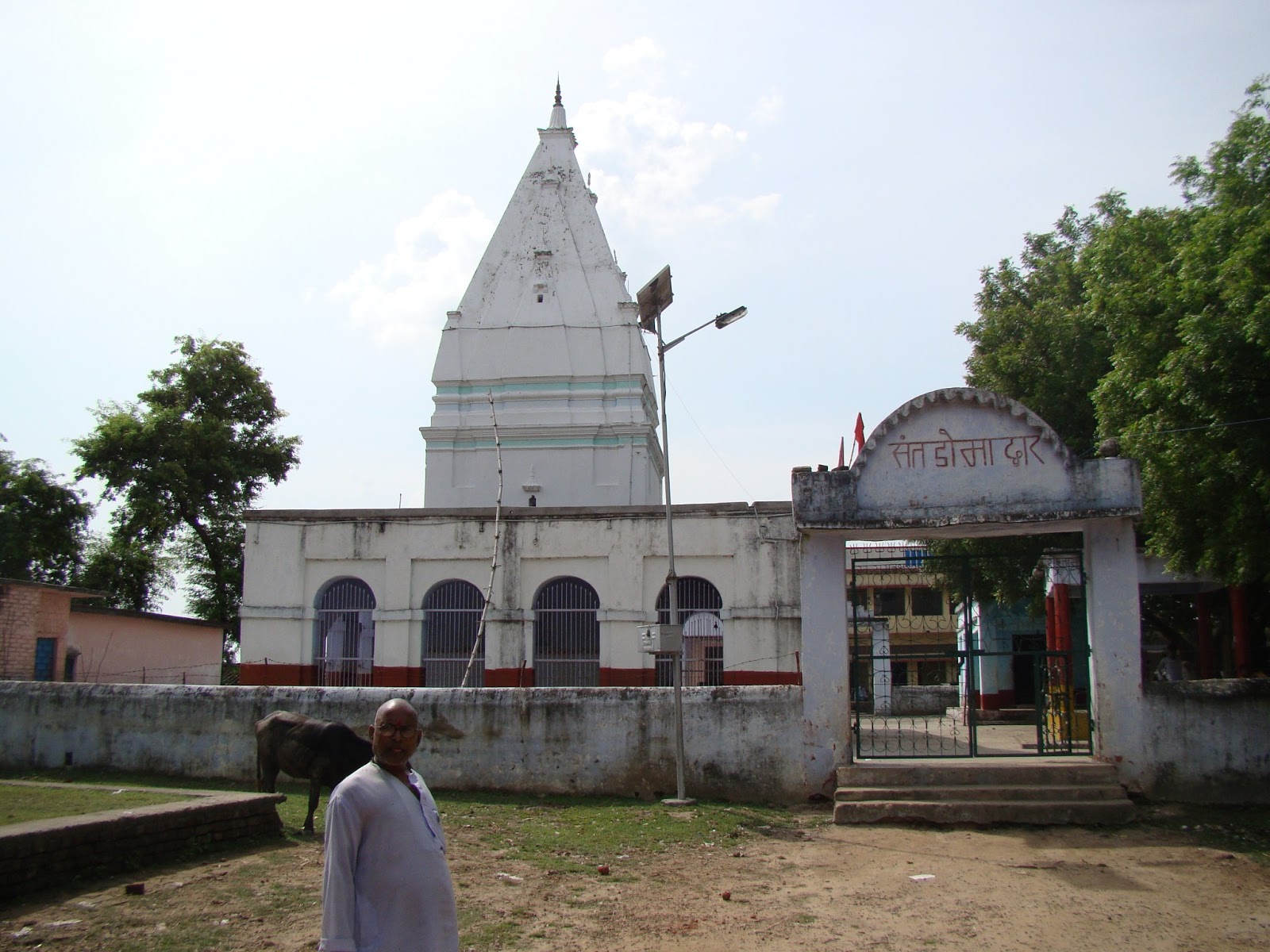
He mentions that the mound is thickly covered with broken bricks and pottery which has been identified as the Northern Black Polished Ware (NBPW) indicative of human presence at the site between 600-200 BC. The evidence of pottery substantially corroborates the tradition about the Chero Raja as the builder of the site. He mentions that the site thus appears to represent quite an early site and deserves to be thoroughly explored further. On a closer examination Garrick concludes that the site of Deo Markandeya contained the remains of a complete religious establishment. But he did not take much notice of the existence of NBPW at the site, which indicates that the temples may have been built on an earlier habitation site which Garrick took to represent a religious establishment attached to the shrines.
The area around the ancient site is now quite well populated. It has remained in occupation since the most ancient times. Several generations have found spiritual solace in visiting this very site.
A large school has been recently built just next to the ancient site, which has now reduced the view of the site from a distance as it may have earlier seen by Buchanan and others. There seems to be an urgent need for systematic exploration of the site and its proper documentation for knowledge of the generations to come.
